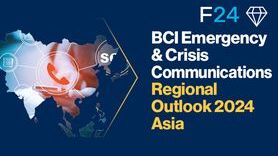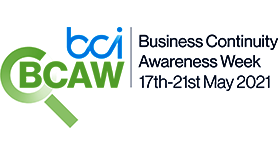The stages of crisis management testing

Planning is important but not enough
Disruption is a matter of when not if. Outlining how a business will respond to that disruption is the objective of the crisis management plan.
But with disruption well-nigh inevitable – the PWC Global Crisis and Resilience Survey 2023 revealed that 96% of companies experienced disruption in the last two years – merely having a crisis management plan is no longer enough.
Instead, companies, to be fully prepared, need to make maximal use of the controlled, risk-managed environment of exercises and testing to assess the crisis readiness of their plan. That means running plans through the stages of crisis management testing.
Establishing the need for exercises and testing
Where to begin? Organizations should start by conducting a needs and gap analysis.
If this seems superfluous, it’s not. Conducting the analysis helps to point to the kind of exercise (out of the many available options) that the program should be deploying. Some of the questions to ask include:
- Is this plan practical and relatively easy to implement?
- Is this plan easy to update?
- Is the effectiveness of this plan measurable?
- Does the plan conform to the organization's constraints?
The stages of testing
What follows? Once organizations have decided on the type of exercise they want to run, they should proceed to the initial run through to ensure that all members of the exercise team receive the same initial information. This review is brief, containing only information that ensures participants can perform as planned during the conduct of the exercise.
What else?
According to international best practice, the subsequent stages of crisis management plan testing include:
-
Start-up briefing. The company should organize a start-up briefing, an integral part of the exercise of hazard control.
Why? Well, if a hazard is identified and cannot be eliminated, the first technique in hazard control is awareness. The logic is simple: if participants aren’t aware of the hazard, it’s difficult to avoid it or control the hazard, either by maintaining the distance from the hazard, minimizing the exposure to the hazard, and/or maintaining a shield from the hazard.
The organization should, therefore, clearly communicate the reasons for an exercise intervention (both crisis and non-crisis) to all participants. To this end, the start-up briefing should be used to avoid confusion between simulated and actual events. - Launch. From there, the organization should check the communications that will be used to launch, stop (temporary), and terminate exercises and testing prior to the scheduled launch. The methods for communicating launch, stop, and terminate exercises and testing should be explained during the start-up briefing.
- Wrap up. After that, the organization should use the same communications for launching and temporarily stopping at the end of the exercises and testing. Again, the start-up briefing should be used to ensure clear communication with the intent of avoiding confusion between simulated and actual events.
- Post-exercise briefing. The company should organize a post-exercise briefing to gather information from actual exercises and testing. Why’s that? Well, it’s been demonstrated that critique of actual incidents and near-incidents will provide valuable information concerning the validity of the plan, the resources that were available, how the resources were used, and the transfer of behavior learned in training. As a result, every incident should be subjected to a critique and a review by key decision-makers. The same format for the critique of an exercise or test should also be used for an actual incident. What’s more, special attention during the post-exercise debriefing should be given to the functioning of the exercise organization and the exercise planning process.
- Observation. The evaluators of the exercise should have knowledge of the expected performance. They should have also prepared observation forms, which should contain the exercise performance objective and allow for notes to be taken during the exercise.
Of course, there’s far more to end-to-end exercise and testing management than the stages of testing. To learn what else there is to know about stress-testing plans before a crisis, download Noggin’s Guide to International Testing and Exercise Standard, ISO 22398.




























